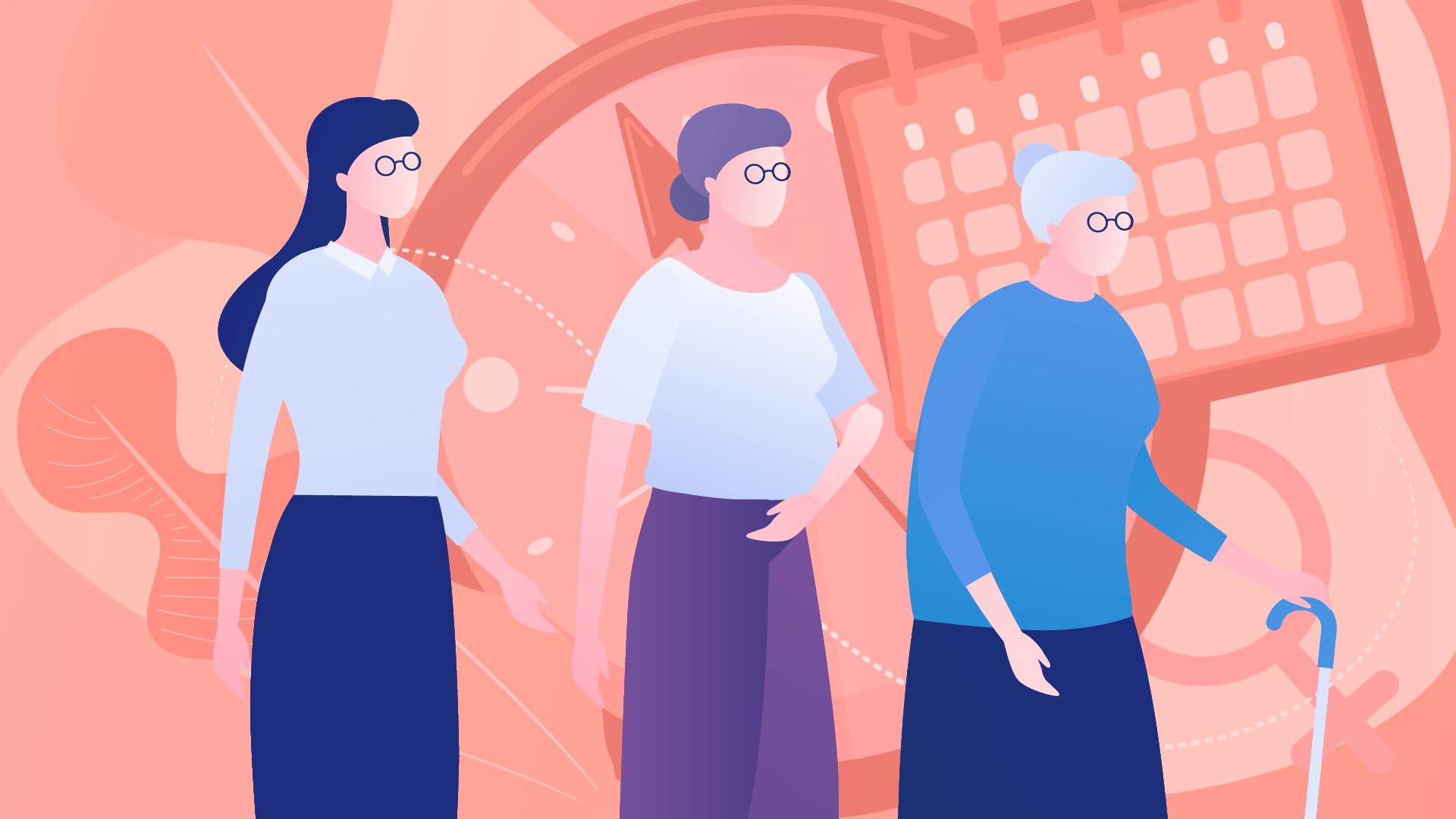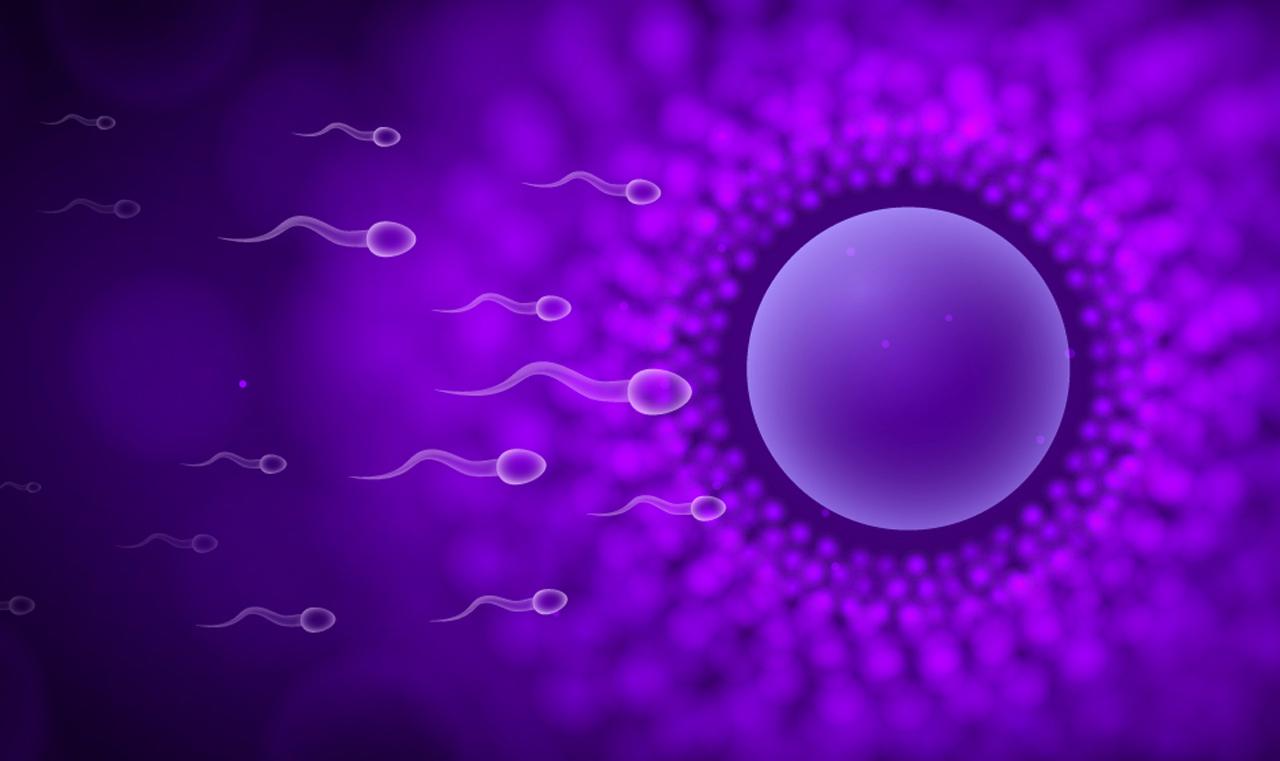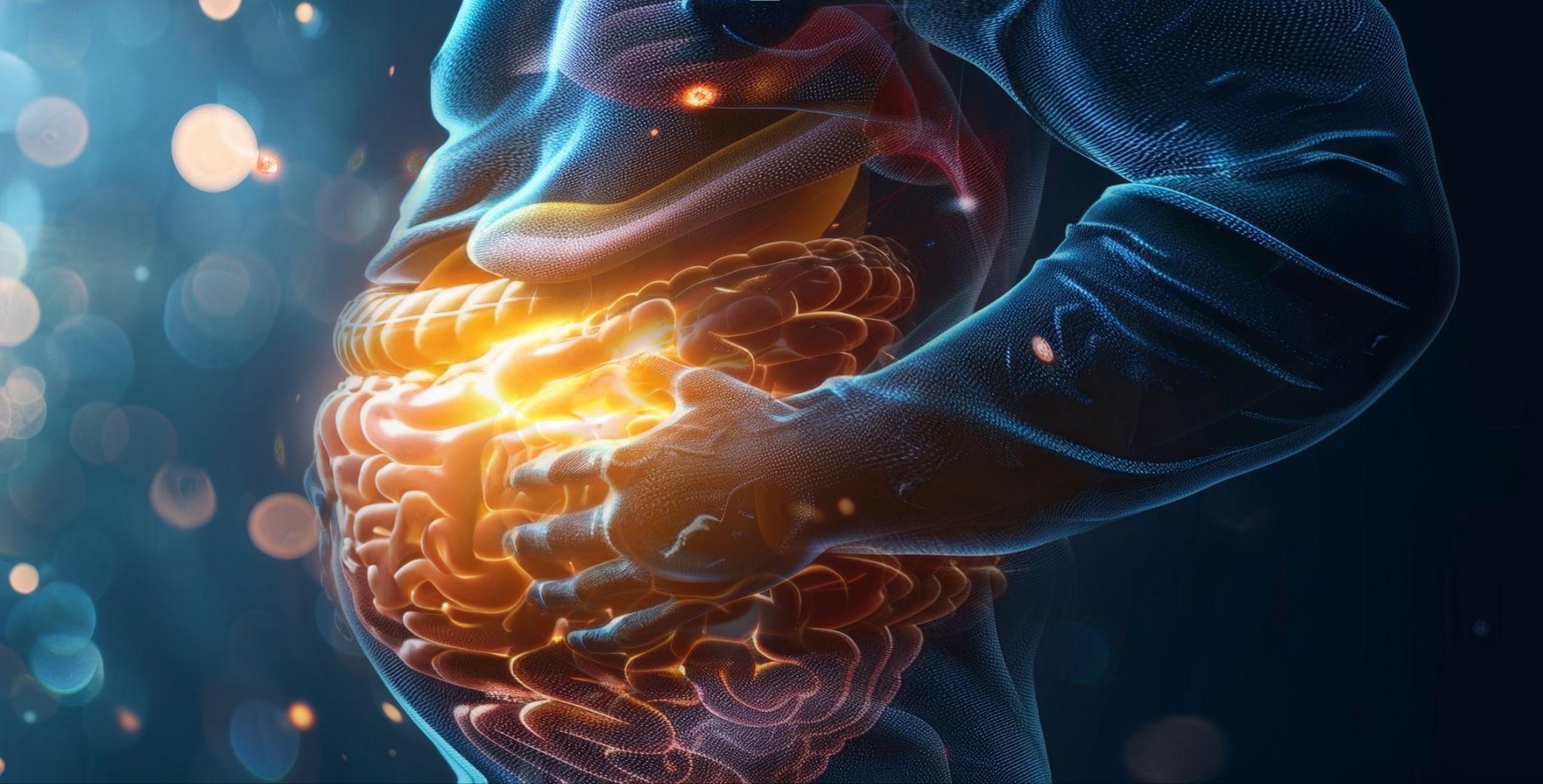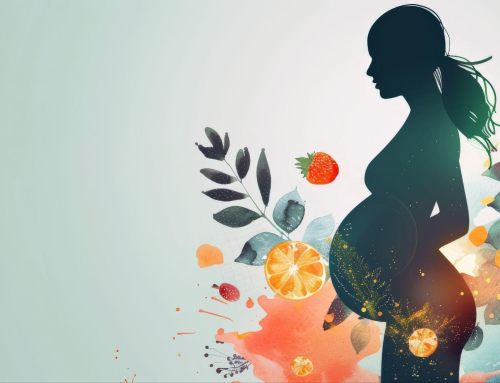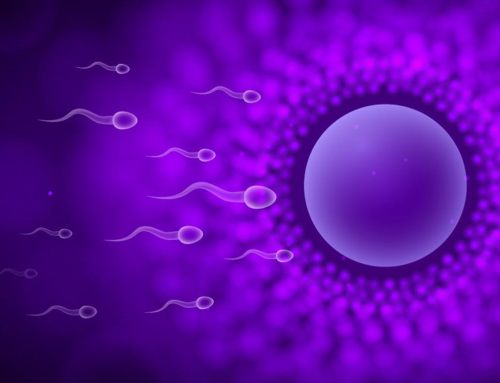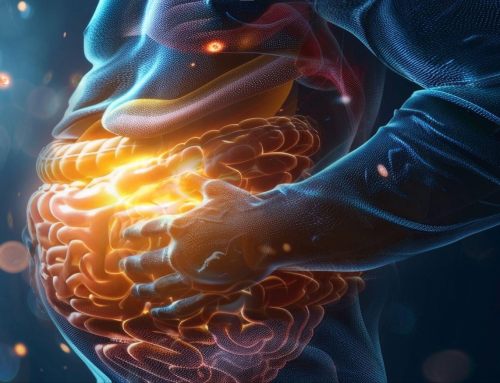Functionality of Collagen Over the Women’s Health Continuum
Collagen is a protein that serves critical structural and communication roles in the body, especially for the changing needs of women’s tissues over the lifespan. It provides varying degrees of flexible structure to multiple tissues, including the skin, bones, tendons, ligaments, blood vessels, and organs (1, 2). Molecular signaling across the collagen surface provides the body with important information for regulating tissue growth and development hormones, immune system activation and modulation, and neurological responses (2).
From childhood through the reproductive years and beyond reproductive capacity through the post-menopausal period, collagen functionality changes during the different stages of a woman’s life. Researchers have identified collagen peptide sequencing for 28 unique collagen types in the human body (3), with a great diversity of molecular isoforms within each collagen type (4).
A review of the efficacy of collagen treatment in clinical studies shows that collagen therapies are effective for a wide range of age-related conditions. Reviewed trials show collagen therapies improve skin regeneration and wound healing, reduce muscle wasting and prevent bone loss, decrease joint pain associated with osteoarthritis (OA) and rheumatoid arthritis (RA), prevent tooth loss associated with periodontitis, and are effective as a less-invasive treatment option for severe gastroesophageal reflux disease (GERD) (5). Collagen therapy in GERD patients infected with Sars-CoV2 may be preferential to using proton pump inhibitors for collagen’s purported anti-viral properties (6) and a reduced risk of viral attacks on the collagen structure of the esophageal sphincters and lung tissue (5, 6). The comorbidity of the diseases above is well-documented in the scientific literature, and the efficacy of collagen-based treatments for these conditions suggests dysfunction in collagen synthesis across the lifespan may be a root cause of these standard inflammatory processes (5).
Collagen and the Developing Young Woman
During childhood and adolescence, collagen production is at its peak. Collagen helps in the growth and development of bones, ensuring their strength and flexibility. It also contributes to the elasticity and resilience of the skin, which is necessary as the primary barrier to the harmful elements of the outside world. The growing child’s basement membrane production and endothelial branching rely on consistent collagen organization to ensure optimal organ structure and function, including the integrity of the gastrointestinal tract endothelial lining (7). An intact endothelial system plays an essential part in the appropriate development of the intestinal microbiota (8). The pediatric microbiome has a significant impact on a child’s developing brain and neurological function (7, 8), and gut dysbiosis is known to correlate with increased incidence of children’s allergies and immune system dysregulation, asthma, digestive issues, skin diseases, and metabolic disorders. Collagen peptide organization, replication, and remodeling processes are critical to healthy gut-brain axis development in children and for preventing neuroimmune conditions, including autoimmune diseases involving collagenous tissues (8).
Collagen Creation in Kids (and Adults) Starts with a Healthy Diet
In early infancy, breastfeeding from a mother who maintains a healthy diet provides the necessary amino acids, vitamins, and minerals for collagen production in the developing child. Urea nitrogen in human breast milk protein helps the infant synthesize nonessential amino acids used in endogenous collagen synthesis, and additional maternal dietary protein does not appear to impact the protein content of breast milk (9). Pediatric functional medicine practitioners do well to encourage breastfeeding and provide whole-food nutrition counseling to benefit mothers and their families.
Feeding young girls (and all children) a well-rounded diet of whole, unprocessed foods rich in proteins containing the amino acids found in endogenous collagen ensures adequate collagen synthesis as children grow and develop. Protein foods containing the amino acids glycine, proline, and hydroxyproline that combine to form the primary collagen triple-helix peptide include meat, poultry, fish, eggs, legumes, and soy (10). For individuals with compromised protein digestion commonly experienced from eating the standard American diet, collagen peptide supplementation equating to up to 36% of daily total protein intake can be a viable alternative to dietary proteins without compromising amino acid balance in the body (11).
Vital cofactor nutrients needed for collagen synthesis include Vitamin C (12) from leafy green vegetables, citrus fruits, berries, bell peppers, and tomatoes (10), and zinc (13) found in whole grains, legumes, nuts, seeds, shellfish, legumes, and meats (10). Water comprises approximately 60% of collagen by mass (2), and maintaining hydration by drinking pure, clean water daily and eating a nutrient-dense whole-food diet ensures good hydration of all collagen types.
Flexibility Fluctuates with Maturity
Adult women have additional needs for altered collagen elasticity and contractility during the reproductive phase of life, and much of the following overview will focus on the unique structural requirements of the prenatal, pregnant, and post-partum woman.
Prenatal – Collagen continues to be essential during a woman’s reproductive years. It maintains the integrity of the skin, keeping it smooth and supple, which most women of child-bearing age expect and desire as a symbol of youth. More importantly, it also supports the structure of hollow organs requiring high elasticity, like the large blood vessels, the colon, and the uterus (14). During embryological development, the combined expression of type I and type III collagen occurs in a coordinated manner to provide structure to the pre-adolescent uterus (14) in preparation for future molecular signal reception from endometrial type I collagen during menses (15). Endometrial tissue’s extracellular matrix (ECM) produces a protein-rich balance of collagens, basement membrane proteins, and proteoglycans that thicken the endometrial lining in preparation for implantation and pregnancy. Cellular scaffolding models of human endometrial cells show collagen types I, II, III, IV, and V are all present in the uterine lining, allowing ultimate tissue elasticity and stretching capacity should implantation be successful (16). When implantation does not occur, hormonal signaling begins the epithelial degradation and shedding of the lining via menstruation. Defects in enzymatic collagen degradation and remodeling processes within the uterine lining contribute to inflammatory diseases like endometriosis and uterine fibroid formation (17).
Mommas Must Stretch
Pregnancy – During pregnancy, collagen serves several essential bodily functions related to stretching maternal tissues. The mother’s body expands as the fetus grows, and ligamentous structures become more flexible before childbirth.
- Connective Tissue Formation: Collagen promotes increased production and elasticity of connective tissues during pregnancy, including those in the uterus, placenta, and amniotic sac. These tissues physically support the developing fetus while ensuring proper nourishment and protection. Collagen content in the uterus increases about 800 percent at full term compared with prenatal composition, though rapid breakdown and resorption of collagen substrates occur within the first week postpartum (18). Research suggests the elevated collagen expression in the uterine tissue may induce fetal immune tolerance to the maternal environment through complex regulation and differentiation of immune cells needed for pregnancy to continue beyond implantation (19).
- Skin elasticity and stretching: Collagen restructuring during pregnancy maintains appropriate skin elasticity to accommodate skin extension, which is necessary for the abdomen and breast areas that experience significant expansion. Hormonal factors, increased mechanical stress on skin tissue, and abnormalities in elastic fibers and collagen fibrils contribute to striae gravidarum (SG), causing emotional distress for many women (20). More human studies are needed to support the safety and efficacy of collagen peptide supplementation during pregnancy to prevent SG formation.
- Joint and Ligament Support: As pregnancy progresses, the hormone relaxin loosens the pelvic ligaments and joints to prepare for childbirth. Relaxin inhibits myofibroblast collagen synthesis, reducing collagen fibril density before delivery (21). Collagen peptide intake may reduce postpartum pelvic joint pain from overstretching ligaments and tendons (22).
- Cervix Remodeling: Collagen makes up 72% of the cervix dry tissue weight and contributes to its mechanical function. During pregnancy, the cervix’s extracellular matrix responds to hormonal signaling from progesterone and estrogen, initiating structural reorganization of cervical collagen fibers to allow for the expanded opening during parturition. Women with connective tissue disorders may benefit from hormonal therapy during pregnancy to counter abnormal cervical collagen restructuring (23).
Postpartum – After childbirth, collagen plays a role in tissue repair and a return to pre-pregnancy shape, especially when combined with a healthy diet and lifestyle choices.
- Tissue Healing: During childbirth, the mother’s body may experience tears or incisions in the perineum or cesarean section incisions. Collagen contributes to the formation of new tissues and supports wound healing of any rips or episiotomy incisions that may have occurred during delivery. Collagen infiltration therapy applied to perineal tears and episiotomy and cesarean scars reduced the visual and pain acuity of these childbirth-related scars in patients receiving 3-5 collagen treatments postpartum (24).
- Skin Elasticity: Pregnancy causes significant stretching and loss of skin elasticity. Collagen fibers provide support and elasticity to the skin, helping it regain its pre-pregnancy state. It aids in restoring skin firmness and tightness, reducing the appearance of stretch marks, and promoting overall skin health (25).
- Pelvic Floor Support: The pelvic floor muscles support the organs in the pelvis, including the uterus, bladder, and rectum. Collagen is a significant component of these muscles and helps maintain their strength and integrity. After childbirth, when the pelvic floor may have been stretched or weakened, collagen synthesis is necessary for the recovery and toning of these muscles (26).
- Breast Tissue Structure: The mammary glands undergo significant remodeling during pregnancy, lactation, and after weaning. Reorganization of collagen type I, III, and V in mammary tissue occurs in each stage, and collagen fibers support the breast tissue as it changes in size and shape. Collagen helps maintain the structural integrity of the breasts and prevents sagging postpartum (27).
What’s Next in Women’s Lives? Collagen for Healthy Menopausal Transitions
During perimenopause and menopause, the body undergoes hormonal changes affecting collagen production. Estrogen and progesterone levels naturally decline, reducing collagen synthesis in the fibroblasts of connective tissues (28). Collagen decline-related concerns of perimenopausal and postmenopausal women include symptoms of dry, thinning skin with a loss of elasticity, hair loss, poor nail health, reduced bone density and increased risk of osteoporosis, joint pain, vaginal dryness, weight gain, and myriad signs of cardiovascular disease (CVD) (29).
Of these listed concerns, vaginal dryness frequently reported by peri- and postmenopausal women can severely impact women’s quality of life and sexuality. Reduced estrogen levels during menopause can lead to vaginal dryness and thinning of the vaginal walls due to decreased collagen production. These changes can cause discomfort, pain during intercourse, and an increased risk of vaginal infections. Hormone replacement therapy offers symptom relief to some women, yet is not indicated for every patient. An open-label study evaluated a topical cream containing hyaluronic acid, collagen, vitamins, and isoflavones applied twice weekly for 12 weeks on 35 postmenopausal women with vulvovaginal atrophy (VVA). Study results showed significant improvement in vaginal dryness, itching, and frequent painful urination in most subjects (30). Though collagen was in a formula with other supportive nutrients, this study suggests collagen peptides may benefit this uncomfortable menopausal condition.
As discussed in the previous article, collagen peptides are beneficial in supporting the visible signs of aging involving skin, hair, and nail health, increasing bone mineral density, and decreasing joint pain and stiffness. Additionally, collagen peptide supplementation can improve serum cholesterol levels, reduce blood pressure, and improve body composition, which are all risk factors for CVD.
Menopausal women often experience obesity due to physiological changes related to declining estrogen levels, and obesity is a risk factor for CVD, diabetes mellitus, and breast cancer (31). An animal model study on the efficacy of collagen hydrolysate supplementation to reduce body weight in ovariectomized rats that mimic menopausal females found collagen supplementation beneficial in reversing estrogen deficiency-induced obesity. However, other serum biomarkers of CVD were unaffected (31). Menopausal women require more dietary protein for collagen-rich muscle and bone health as they age (32), and collagen peptide supplementation can be a suitable nutritional protein substitute to increase lean body mass and balance body weight (31).
**
Do you want to learn even more about the many other ways collagen supports women’s health through the life stages? Join PLMI as we learn from the leading experts on this critical topic during our free, live, virtual webinar Exploring the Mechanisms of Action of Collagen Peptides Over the Woman’s Health Continuum on July 25, 2023, from 5-7 pm PST. Registration is FREE and takes just a minute using the following link:
Sources:
- Collagens. Cell Tissue Res. 2010 Jan;339(1):247-57. doi: 10.1007/s00441-009-0844-4. Epub 2009 Aug 20. PMID: 19693541; PMCID: PMC2997103.
- Gelse K, Pöschl E, Aigner T. Collagens–structure, function, and biosynthesis. Adv Drug Deliv Rev. 2003 Nov 28;55(12):1531-46. doi: 10.1016/j.addr.2003.08.002. PMID: 14623400.
- Gordon MK, Hahn RA. Collagens. Cell Tissue Res. 2010 Jan;339(1):247-57. doi: 10.1007/s00441-009-0844-4. Epub 2009 Aug 20. PMID: 19693541; PMCID: PMC2997103.
- Ricard-Blum S. The collagen family. Cold Spring Harb Perspect Biol. 2011 Jan 1;3(1):a004978. doi: 10.1101/cshperspect.a004978. PMID: 21421911; PMCID: PMC3003457.
- Wang H. A Review of the Effects of Collagen Treatment in Clinical Studies. Polymers (Basel). 2021 Nov 9;13(22):3868. doi: 10.3390/polym13223868. PMID: 34833168; PMCID: PMC8620403.
- Zhu J, Madhurapantula RS, Kalyanasundaram A, Sabharwal T, Antipova O, Bishnoi SW, Orgel JPRO. Ultrastructural Location and Interactions of the Immunoglobulin Receptor Binding Sequence within Fibrillar Type I Collagen. Int J Mol Sci. 2020 Jun 11;21(11):4166. doi: 10.3390/ijms21114166. PMID: 32545195; PMCID: PMC7312686.
- Bernfield M, Banerjee SD, Koda JE, Rapraeger AC. Remodeling of the basement membrane: morphogenesis and maturation. Ciba Found Symp. 1984;108:179-96. doi: 10.1002/9780470720899.ch12. PMID: 6569828.
- Ihekweazu FD, Versalovic J. Development of the Pediatric Gut Microbiome: Impact on Health and Disease. Am J Med Sci. 2018 Nov;356(5):413-423. doi: 10.1016/j.amjms.2018.08.005. Epub 2018 Aug 21. PMID: 30384950; PMCID: PMC6268214.
- Kim SY, Yi DY. Components of human breast milk: from macronutrient to microbiome and microRNA. Clin Exp Pediatr. 2020 Aug;63(8):301-309. doi: 10.3345/cep.2020.00059. Epub 2020 Mar 23. PMID: 32252145; PMCID: PMC7402982.
- “Collagen.” Harvard T. Chan School of Public Health, The Nutrition Source, May 2021, https://www.hsph.harvard.edu/nutritionsource/collagen/
- Paul C, Leser S, Oesser S. Significant Amounts of Functional Collagen Peptides Can Be Incorporated in the Diet While Maintaining Indispensable Amino Acid Balance. Nutrients. 2019 May 15;11(5):1079. doi: 10.3390/nu11051079. PMID: 31096622; PMCID: PMC6566836.
- DePhillipo NN, Aman ZS, Kennedy MI, Begley JP, Moatshe G, LaPrade RF. Efficacy of Vitamin C Supplementation on Collagen Synthesis and Oxidative Stress After Musculoskeletal Injuries: A Systematic Review. Orthop J Sports Med. 2018 Oct 25;6(10):2325967118804544. doi: 10.1177/2325967118804544. PMID: 30386805; PMCID: PMC6204628.
- Tengrup I, Ahonen J, Zederfeldt B. Influence of zinc on synthesis and the accumulation of collagen in early granulation tissue. Surg Gynecol Obstet. 1981 Mar;152(3):323-6. PMID: 7466582.
- Kuivaniemi H, Tromp G. Type III collagen (COL3A1): Gene and protein structure, tissue distribution, and associated diseases. Gene. 2019 Jul 30;707:151-171. doi: 10.1016/j.gene.2019.05.003. Epub 2019 May 7. PMID: 31075413; PMCID: PMC6579750.
- Di Lullo GA, Sweeney SM, Korkko J, Ala-Kokko L, San Antonio JD. Mapping the ligand-binding sites and disease-associated mutations on the most abundant protein in the human, type I collagen. J Biol Chem. 2002 Feb 8;277(6):4223-31. doi: 10.1074/jbc.M110709200. Epub 2001 Nov 9. PMID: 11704682.
- Abbas Y, Brunel LG, Hollinshead MS, Fernando RC, Gardner L, Duncan I, Moffett A, Best S, Turco MY, Burton GJ, Cameron RE. Generation of a three-dimensional collagen scaffold-based model of the human endometrium. Interface Focus. 2020 Apr 6;10(2):20190079. doi: 10.1098/rsfs.2019.0079. Epub 2020 Feb 14. PMID: 32194932; PMCID: PMC7061944.
- Everts V, van der Zee E, Creemers L, Beertsen W. Phagocytosis and intracellular digestion of collagen, its role in turnover and remodelling. Histochem J. 1996 Apr;28(4):229-45. doi: 10.1007/BF02409011. PMID: 8762055.
- MORRIONE TG, SEIFTER S. Alteration in the collagen content of the human uterus during pregnancy and post partum involution. J Exp Med. 1962 Feb 1;115(2):357-65. doi: 10.1084/jem.115.2.357. PMID: 14476228; PMCID: PMC2137490.
- Shi JW, Lai ZZ, Yang HL, Yang SL, Wang CJ, Ao D, Ruan LY, Shen HH, Zhou WJ, Mei J, Fu Q, Li MQ. Collagen at the maternal-fetal interface in human pregnancy. Int J Biol Sci. 2020 May 25;16(12):2220-2234. doi: 10.7150/ijbs.45586. PMID: 32549767; PMCID: PMC7294936.
- Farahnik B, Park K, Kroumpouzos G, Murase J. Striae gravidarum: Risk factors, prevention, and management. Int J Womens Dermatol. 2016 Dec 6;3(2):77-85. doi: 10.1016/j.ijwd.2016.11.001. PMID: 28560300; PMCID: PMC5440454.
- Ng HH, Shen M, Samuel CS, Schlossmann J, Bennett RG. Relaxin and extracellular matrix remodeling: Mechanisms and signaling pathways. Mol Cell Endocrinol. 2019 May 1;487:59-65. doi: 10.1016/j.mce.2019.01.015. Epub 2019 Jan 17. PMID: 30660699; PMCID: PMC7384500.
- Zdzieblik D, Brame J, Oesser S, Gollhofer A, König D. The Influence of Specific Bioactive Collagen Peptides on Knee Joint Discomfort in Young Physically Active Adults: A Randomized Controlled Trial. Nutrients. 2021 Feb 5;13(2):523. doi: 10.3390/nu13020523. PMID: 33562729; PMCID: PMC7915677.
- Nallasamy S, Yoshida K, Akins M, Myers K, Iozzo R, Mahendroo M. Steroid Hormones Are Key Modulators of Tissue Mechanical Function via Regulation of Collagen and Elastic Fibers. Endocrinology. 2017 Apr 1;158(4):950-962. doi: 10.1210/en.2016-1930. PMID: 28204185; PMCID: PMC5460796.
- Romero-Cullerés G, Amela-Arévalo A, Jané-Feixas C, Vilaseca-Grané A, Arnau A, Torà N. Eficacia de las infiltraciones con colágeno en el dolor pélvico causado por cicatrices de episiotomía y cesáreas. Ensayo clínico piloto aleatorizado [Efficacy of collagen infiltrations in the pelvic pain caused by episiotomy and caesarean scars. Pilot randomized clinical trial]. Rehabilitacion (Madr). 2022 Apr-Jun;56(2):85-92. Spanish. doi: 10.1016/j.rh.2021.04.001. Epub 2021 Sep 4. PMID: 34489100.
- de Miranda RB, Weimer P, Rossi RC. Effects of hydrolyzed collagen supplementation on skin aging: a systematic review and meta-analysis. Int J Dermatol. 2021 Dec;60(12):1449-1461. doi: 10.1111/ijd.15518. Epub 2021 Mar 20. PMID: 33742704.
- Weintraub AY, Glinter H, Marcus-Braun N. Narrative review of the epidemiology, diagnosis and pathophysiology of pelvic organ prolapse. Int Braz J Urol. 2020 Jan-Feb;46(1):5-14. doi: 10.1590/S1677-5538.IBJU.2018.0581. PMID: 31851453; PMCID: PMC6968909.
- Tsutsui, S., Wakasa, H., Tsugami, Y. et al. Distinct Expression Patterns of Fibrillar Collagen Types I, III, and V in Association with Mammary Gland Remodeling during Pregnancy, Lactation and Weaning. J Mammary Gland Biol Neoplasia 25, 219–232 (2020).
- Lane NE. Epidemiology, etiology, and diagnosis of osteoporosis. Am J Obstet Gynecol. 2006 Feb;194(2 Suppl):S3-11. doi: 10.1016/j.ajog.2005.08.047. PMID: 16448873.
- Santoro N, Roeca C, Peters BA, Neal-Perry G. The Menopause Transition: Signs, Symptoms, and Management Options. J Clin Endocrinol Metab. 2021 Jan 1;106(1):1-15. doi: 10.1210/clinem/dgaa764. PMID: 33095879.
- Tersigni C, Di Simone N, Tempestilli E, Cianfrini F, Russo R, Moruzzi MC, Amar ID, Fiorelli A, Scambia G, Villa P. Non-hormonal treatment of vulvo-vaginal atrophy-related symptoms in post-menopausal women. J Obstet Gynaecol. 2015;35(8):835-8. doi: 10.3109/01443615.2015.1014326. Epub 2015 May 13. PMID: 25968636.
- Chiang TI, Chang IC, Lee HH, Hsieh KH, Chiu YW, Lai TJ, Liu JY, Hsu LS, Kao SH. Amelioration of estrogen deficiency-induced obesity by collagen hydrolysate. Int J Med Sci. 2016 Oct 19;13(11):853-857. doi: 10.7150/ijms.16706. PMID: 27877077; PMCID: PMC5118756.
- Agostini D, Zeppa Donati S, Lucertini F, Annibalini G, Gervasi M, Ferri Marini C, Piccoli G, Stocchi V, Barbieri E, Sestili P. Muscle and Bone Health in Postmenopausal Women: Role of Protein and Vitamin D Supplementation Combined with Exercise Training. Nutrients. 2018 Aug 16;10(8):1103. doi: 10.3390/nu10081103. PMID: 30115856; PMCID: PMC6116194.
